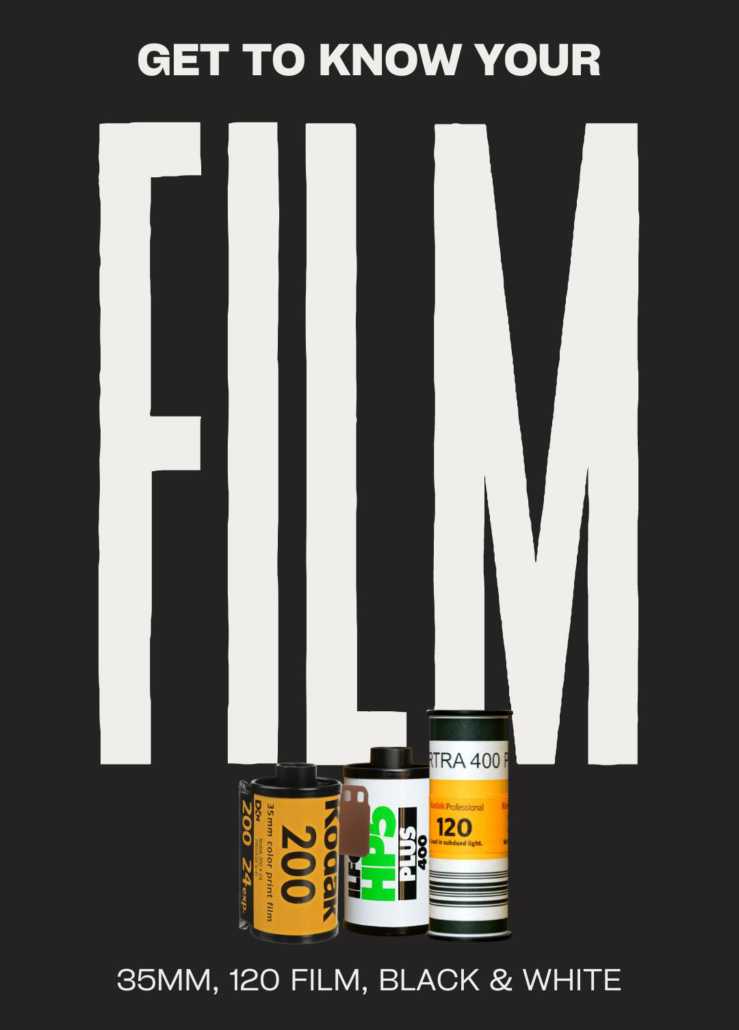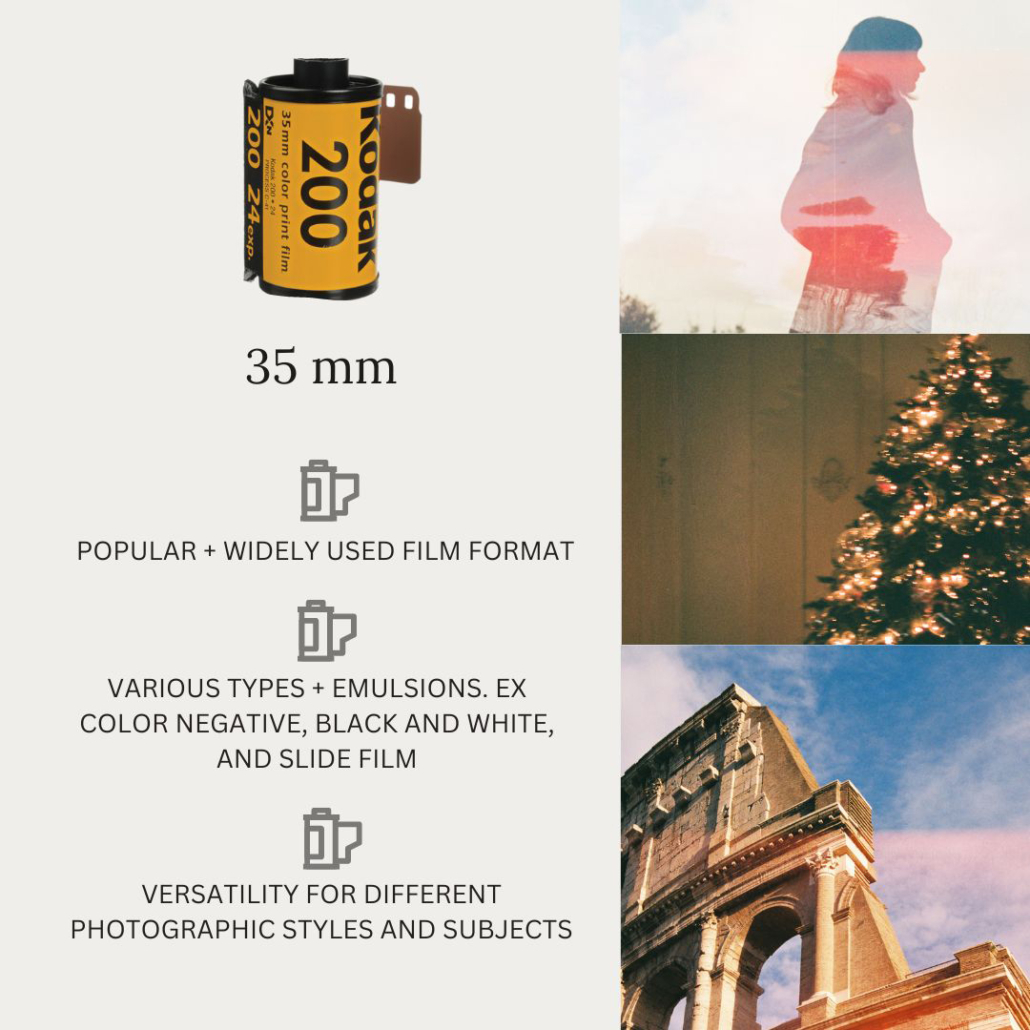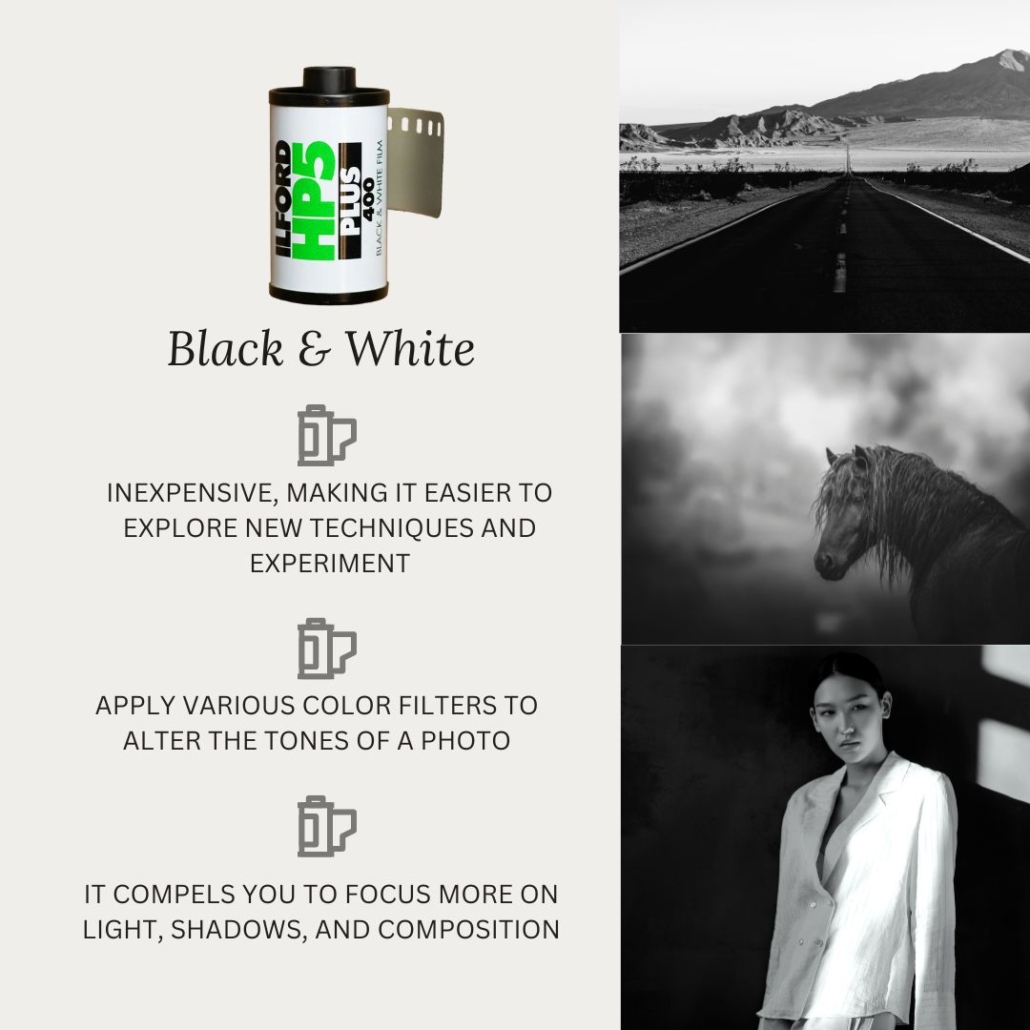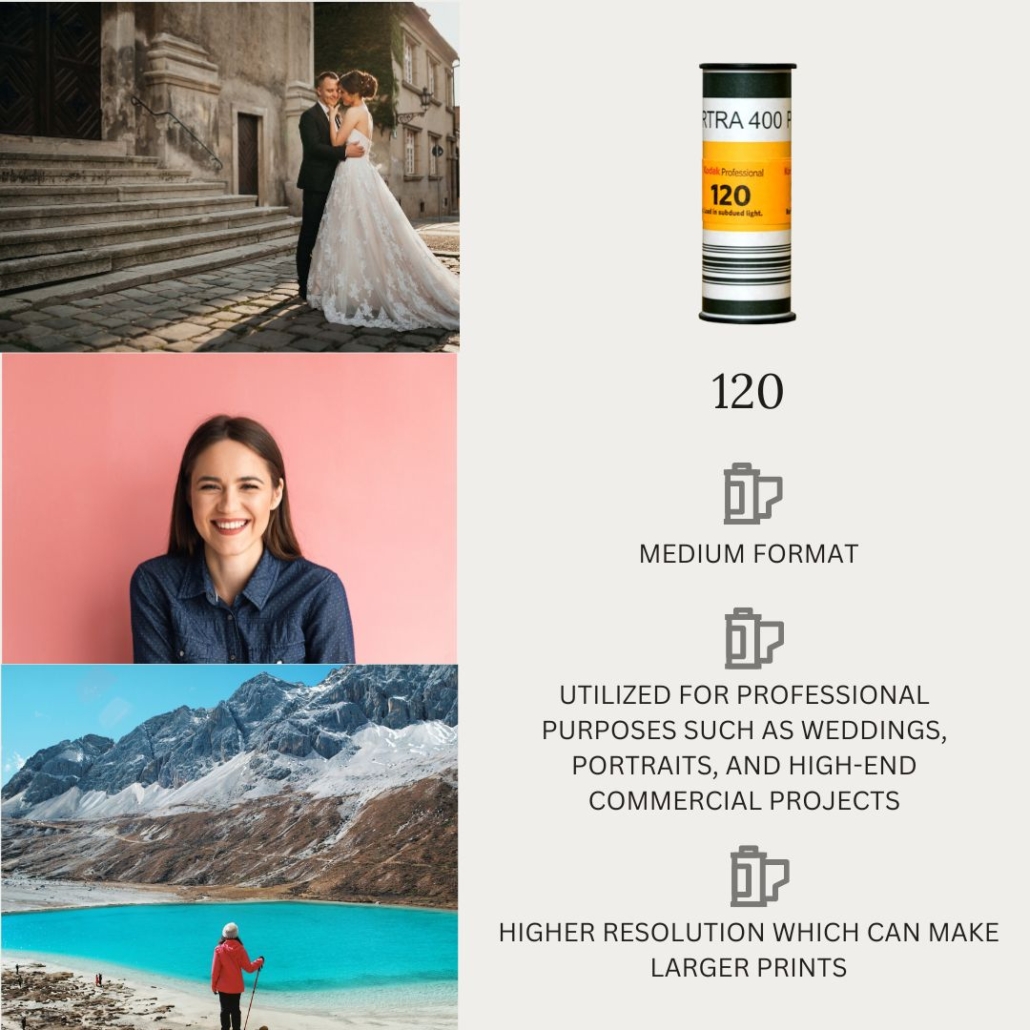Starting out as a beginner film photographer is an exciting journey into the world of visual storytelling. As you begin, it’s important to understand the different types of film you’ll be working with. Each kind, like 35mm color negative film, classic black and white film, and higher clarity 120 film, has its own unique traits. By learning about these films – how they react to light and capture scenes – you’ll be able to create better photos.
35mm color negative film is a versatile and beginner-friendly gateway to film photography. This film accommodates diverse scenarios; lower ISO (ISO 100) suits well-lit settings, while higher ISO (ISO 400) handles low-light or fast-action scenes. 35mm film processing is a universally adopted technique employed by most labs, ensuring widespread availability.
Black and white negative film is a timeless and versatile medium in photography that captures images in various shades of gray rather than color. It has the ability to make contrasts stand out and bring attention to the textures in your images.
120 film, or medium format, offers superior image quality compared to 35mm, with higher resolution, greater detail, and better dynamic range. Its larger negatives produce smoother tones and less grain, making it ideal for lifelike, professional-grade photos. Available in various aspect ratios, 120 film provides more compositional flexibility, making it perfect for portrait, landscape, and fine art photography. Though it requires more precision, the results are often worth the extra effort.
From single-use cameras to professional film formats — our processing experts can turn those shots into digital files and prints in no time! Have specific questions about your film? We’re happy to help! Stop in or give us a call.







